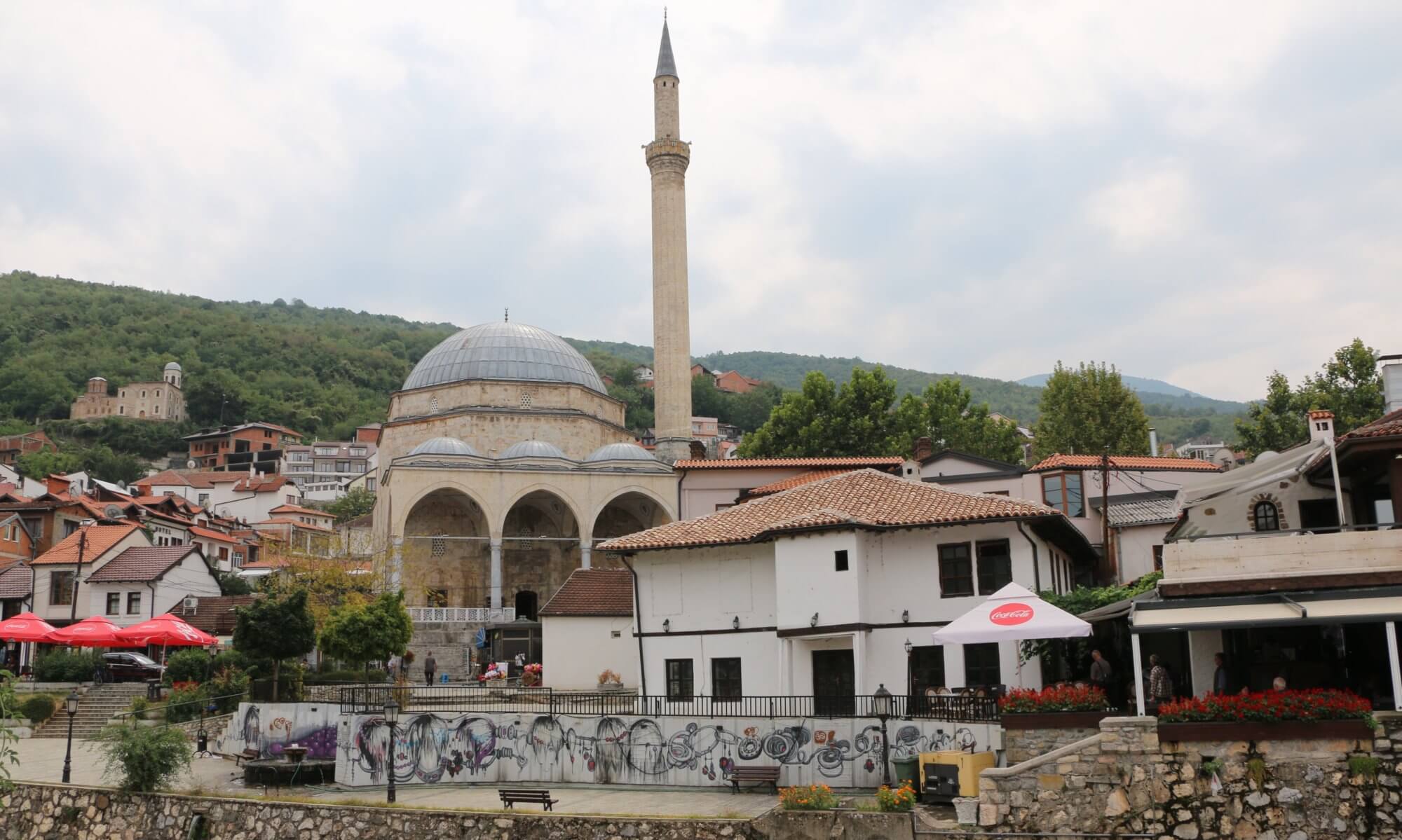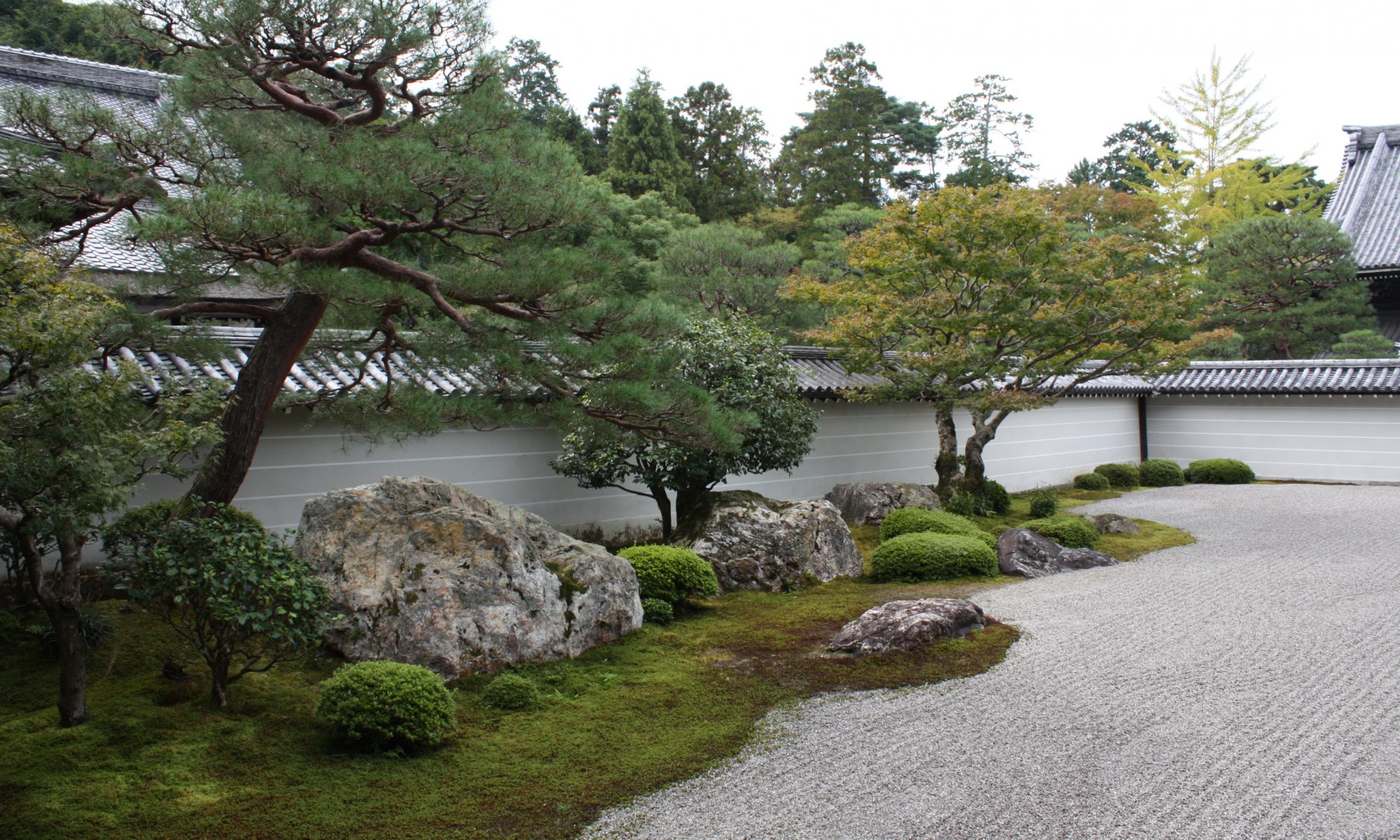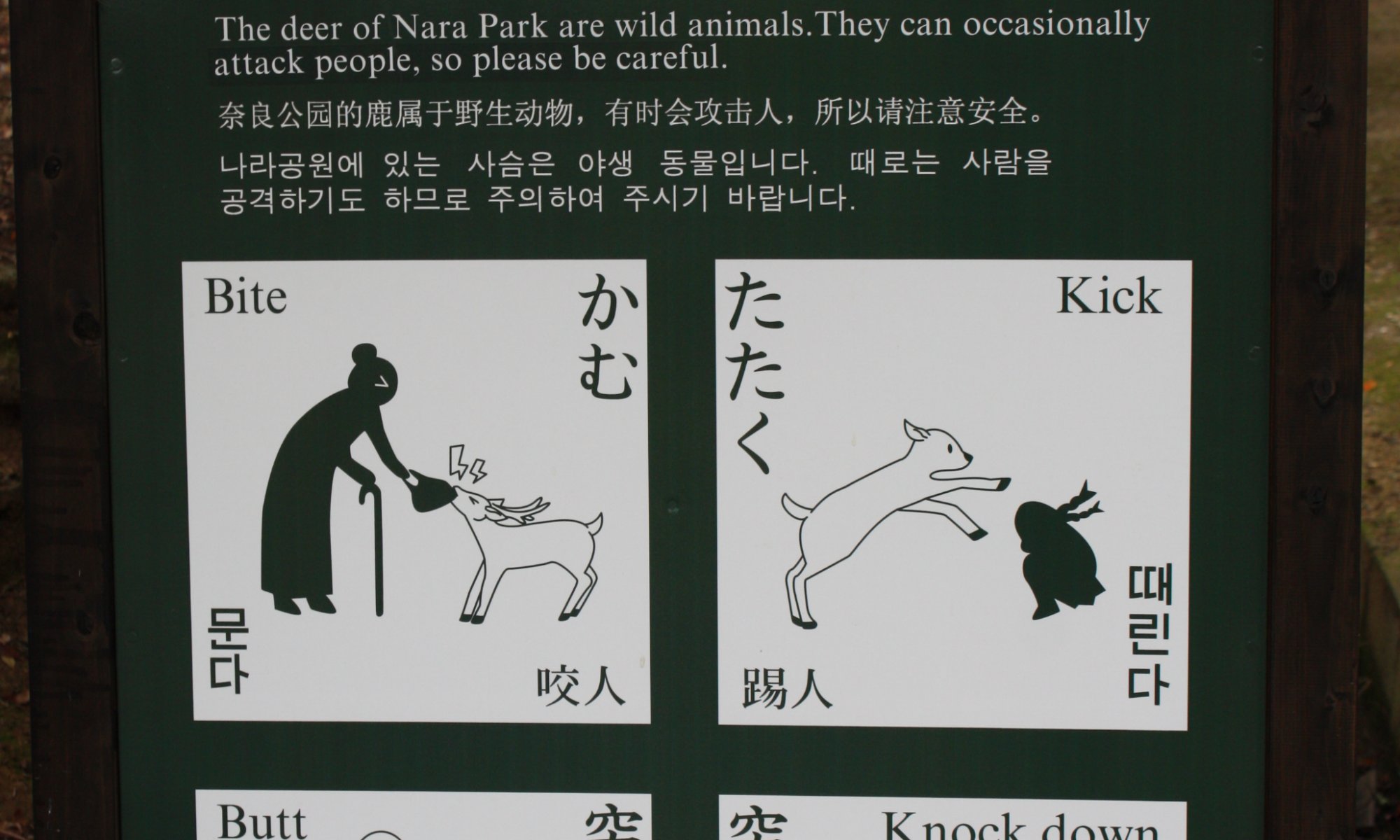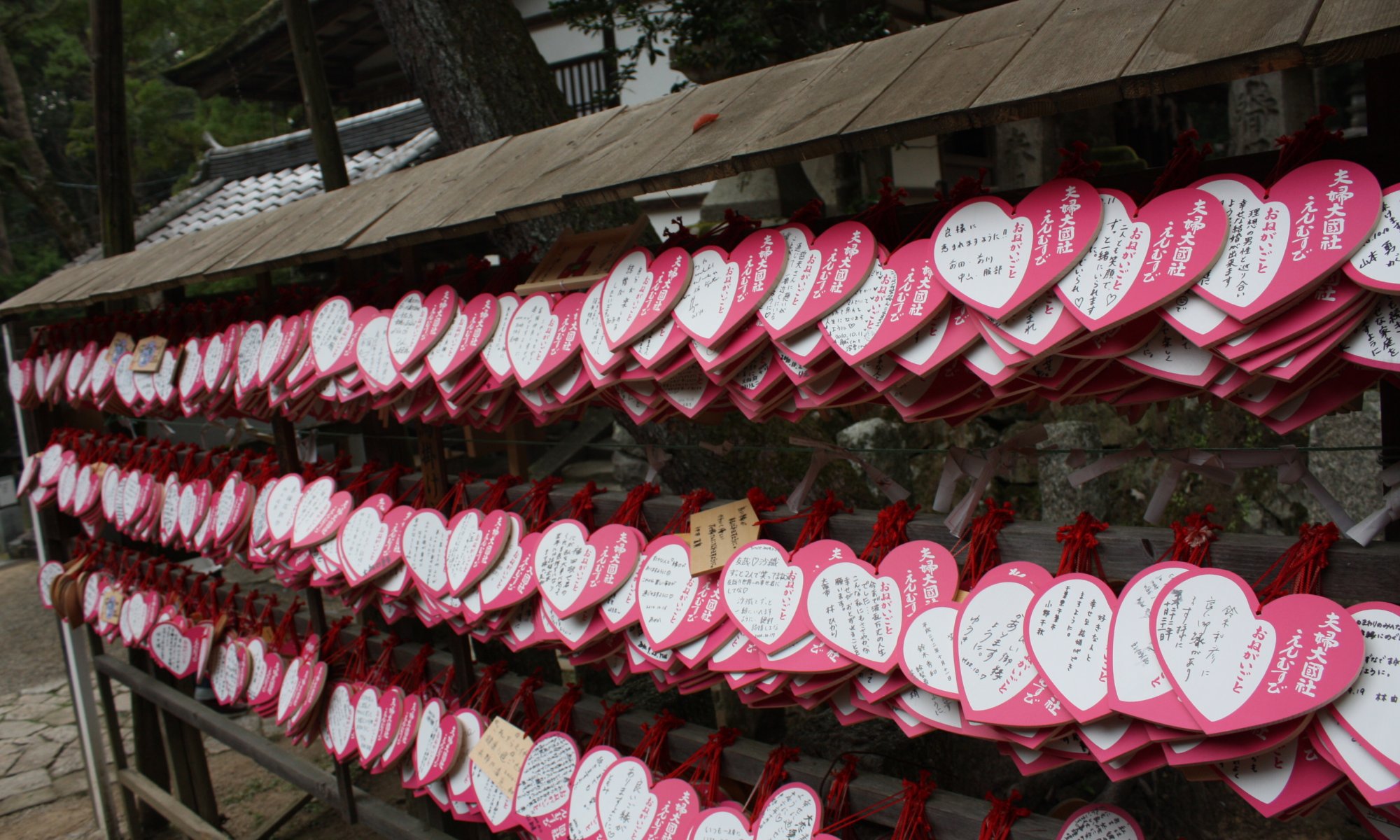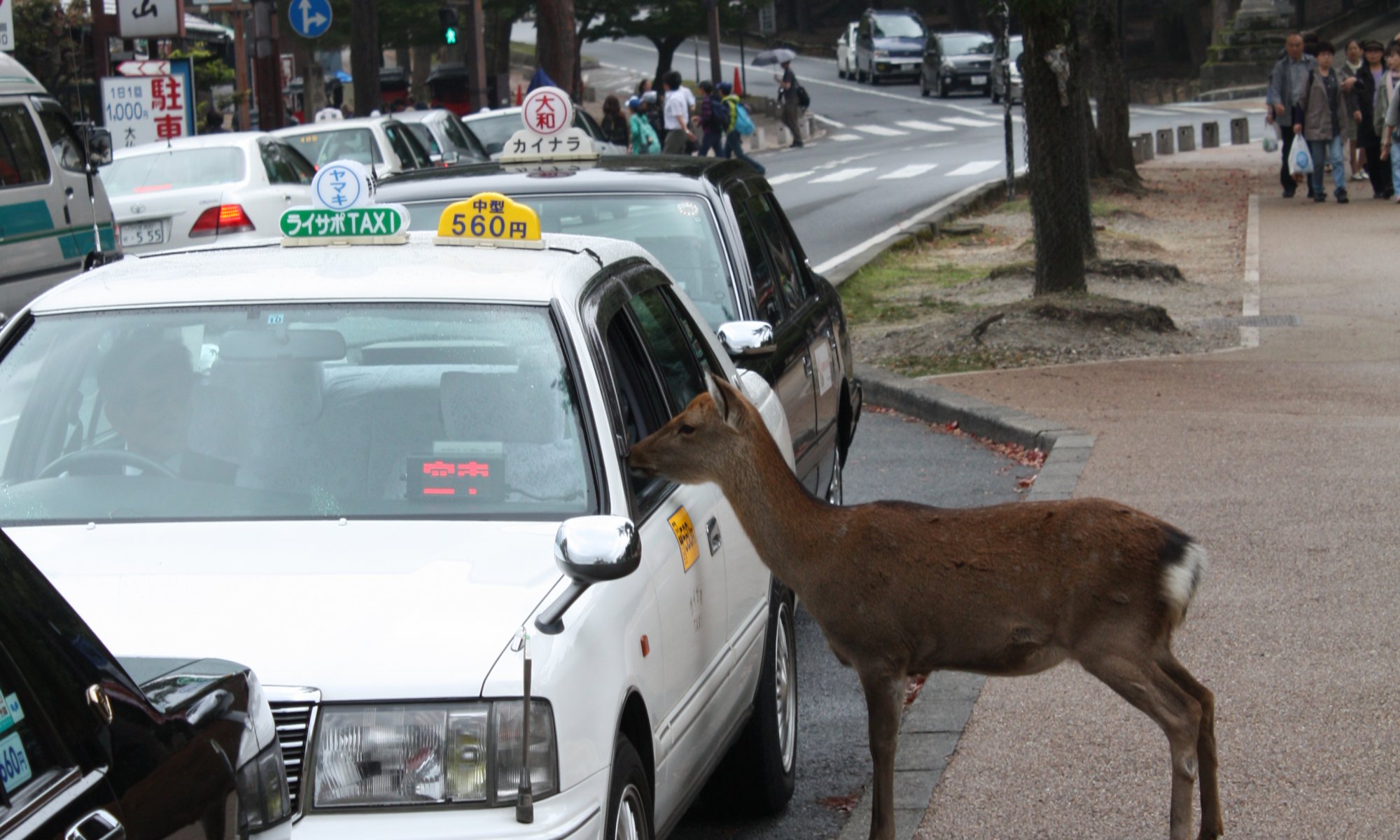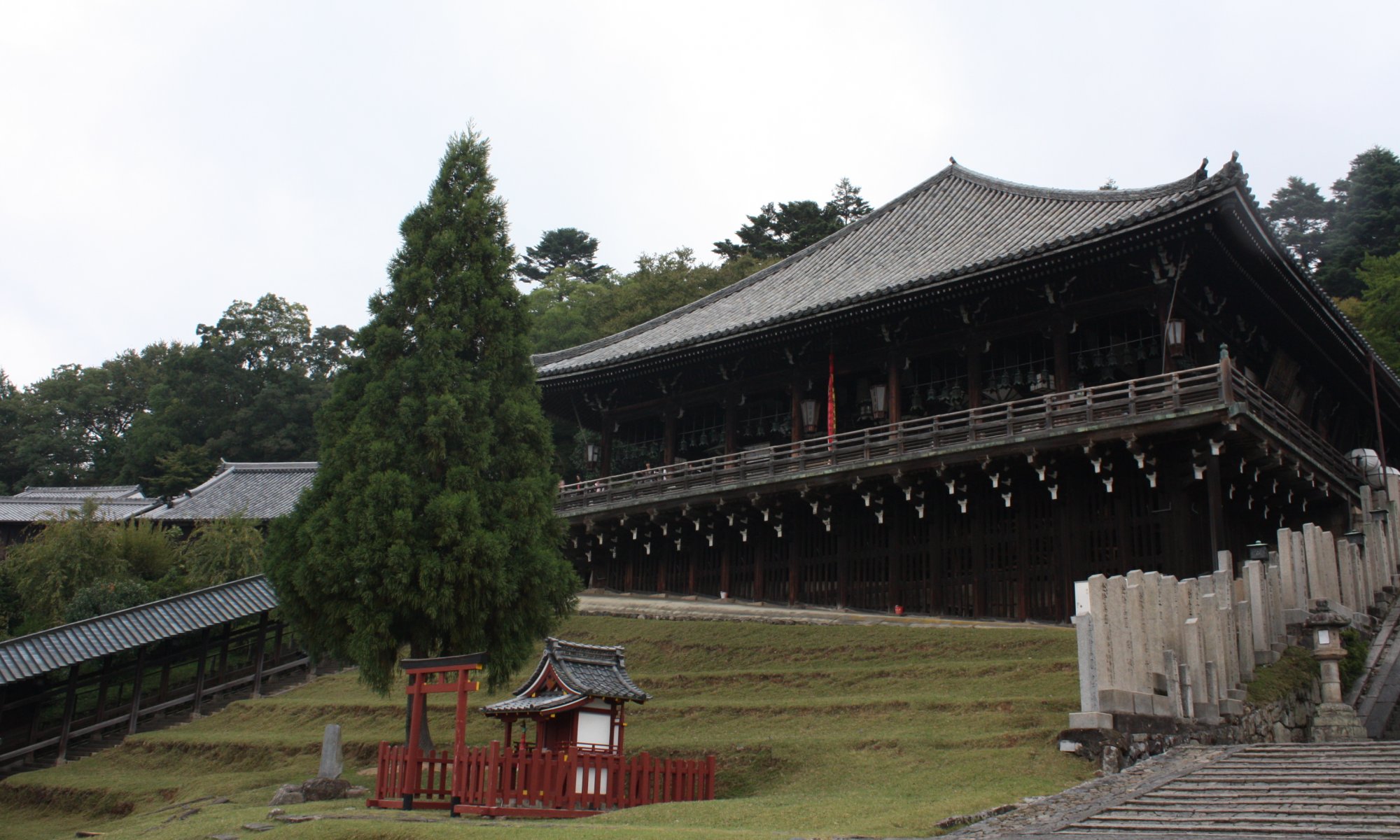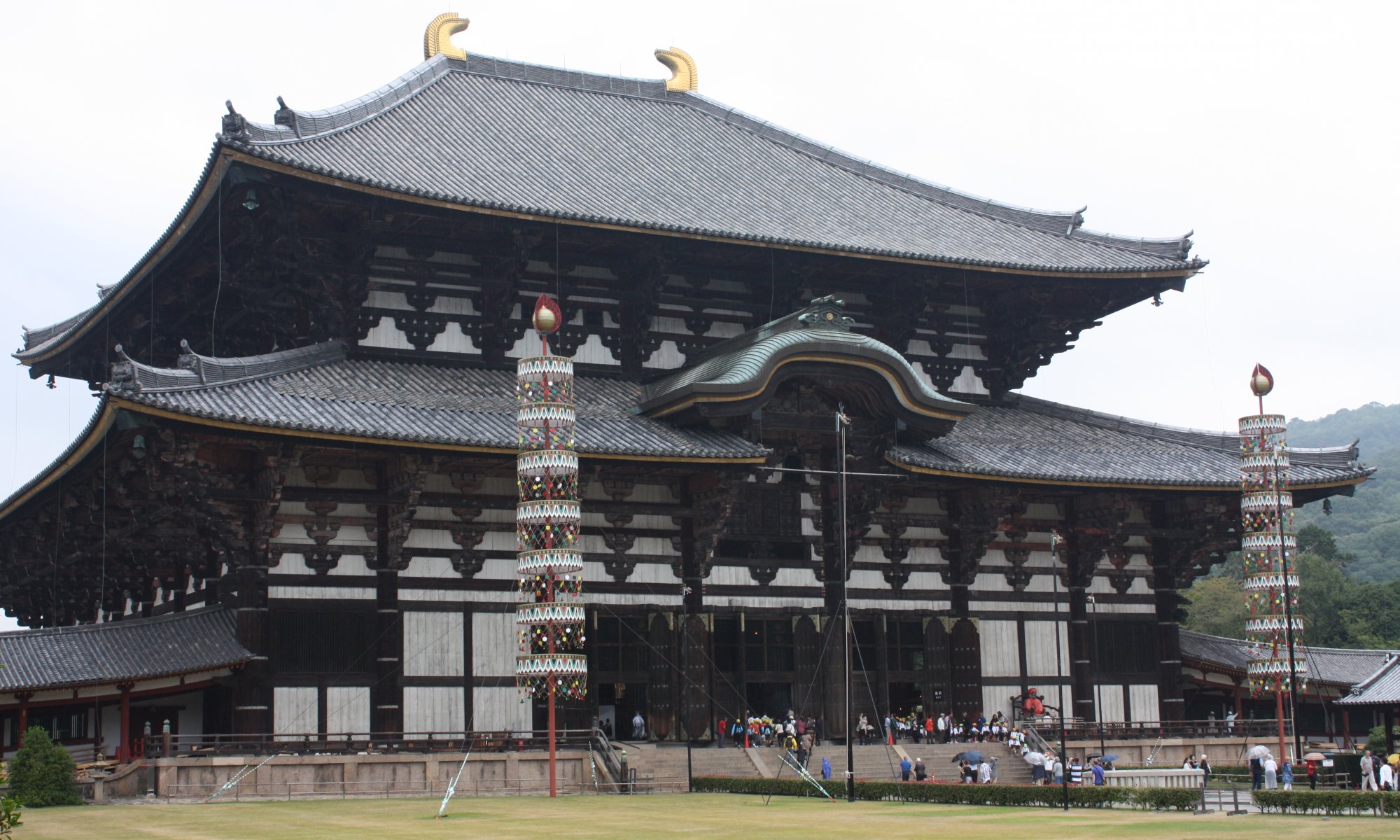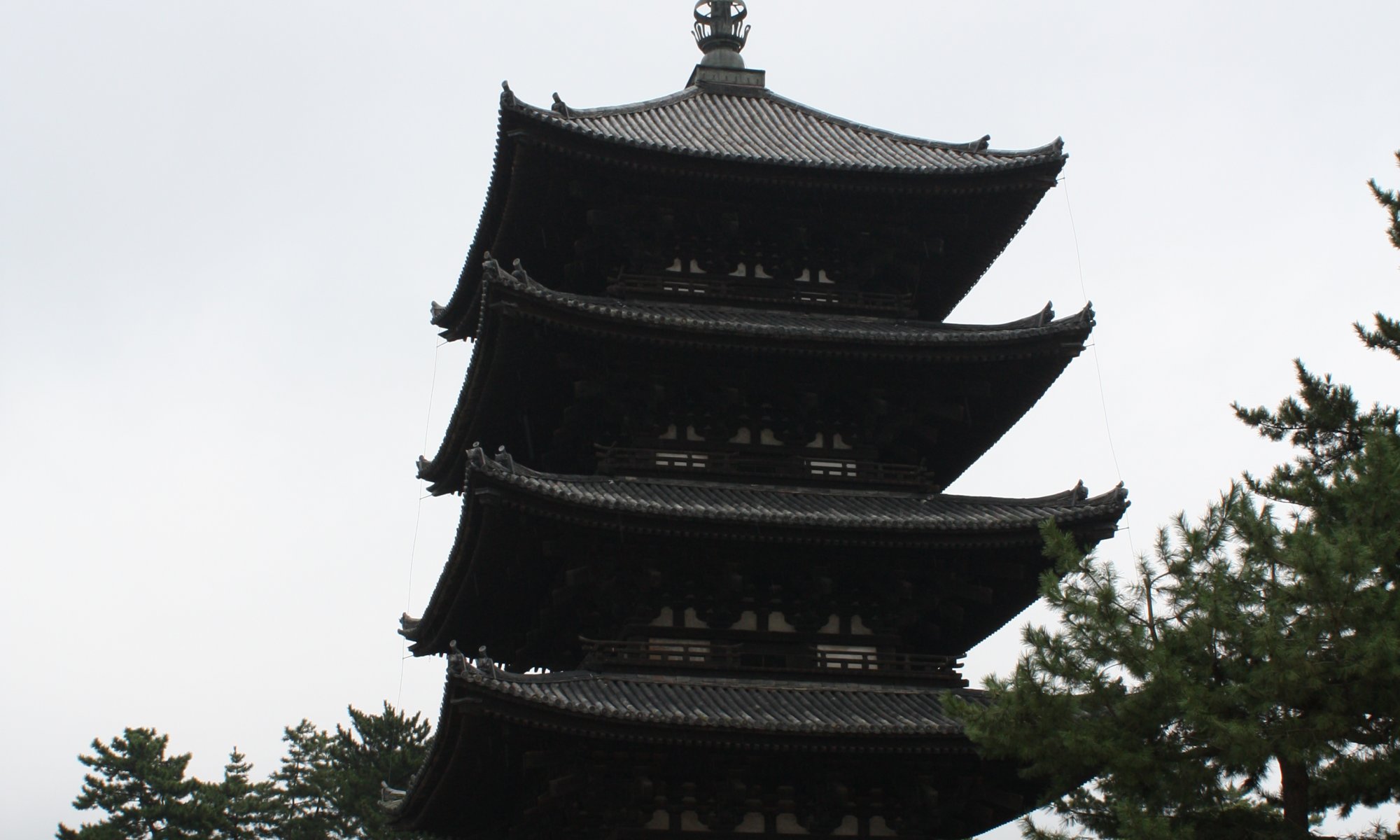I came to Japan first in 2008 for a scientific conference in Tōkyō – and immediately fell in love with this country. It was fascinating to see all these big differences in culture. Therefore I decided to return – but instead of going back to the capital I chose Kyōto as a destination and I wasn’t disappointed. Continue reading “The real Japan”
Deer at the city
Visiting the city of Nara from Kyōto, Japan is an easy short trip by regional train – and it is really worth it. There are lots of important temples (including the largest Buddha statue) and a situation I’ve never seen before: deer living within the city center. Continue reading “Deer at the city”
Kasuga-Taisha
The Kasuga-Taisha is a Shintō shrine in Nara, Japan and is a UNESCO world heritage site. It is located close to the two holy mountains Kasugayama and Mikasayama. The shrine is said to be built in 768. Continue reading “Kasuga-Taisha”
I’m from Jamaica
Japanese children learn to not talk to any stranger. This seems to be deeply engraved into Japanese culture and gives you the feeling of not being a foreigner, as nobody ever takes notice of you – even if you’re the only gaijin on the whole subway train. But it also doesn’t help you feel at home if nobody communicates with you. Continue reading “I’m from Jamaica”
Nigatsu-dō
An important Buddhist temple in Nara, Japan is Nigatsu-dō; the hall of the second month. It is located at the foot of the Wakakusa mountain in the east of the hall of the great Buddha. It was founded in the year 752 by a monk. Continue reading “Nigatsu-dō”
Tōdai-ji
The Tōdai-ji is an important Buddhist temple in Nara, Japan. It houses the biggest Buddha statue (daibutsu) with a height of 15 meters and a weight of 452 tons. The temple dates back to the year 745 and was last rebuilt in 1708. Continue reading “Tōdai-ji”
Kōfuku-ji
Another Buddhist temple in Nara, Japan: the Kōfuku-ji is located next to the Kasuga-Taisha. You can easily find the pagoda Gojūnotō next to it. It was founded in 669 in Kyōto and then shifted to Nara in 710. Within the Gempei war in 1108 it was destroyed. Continue reading “Kōfuku-ji”
